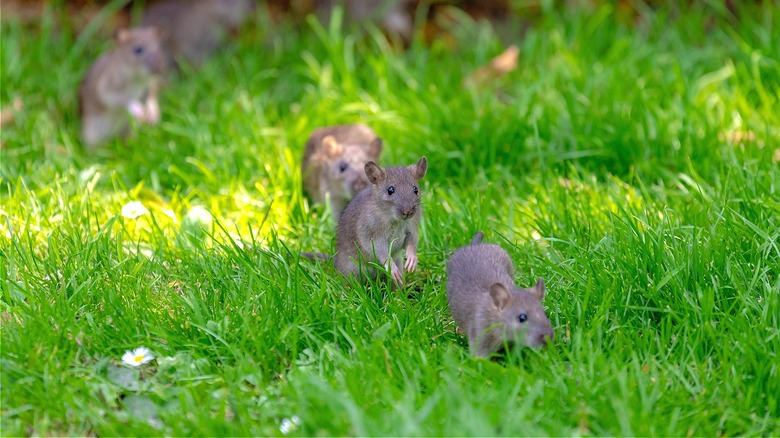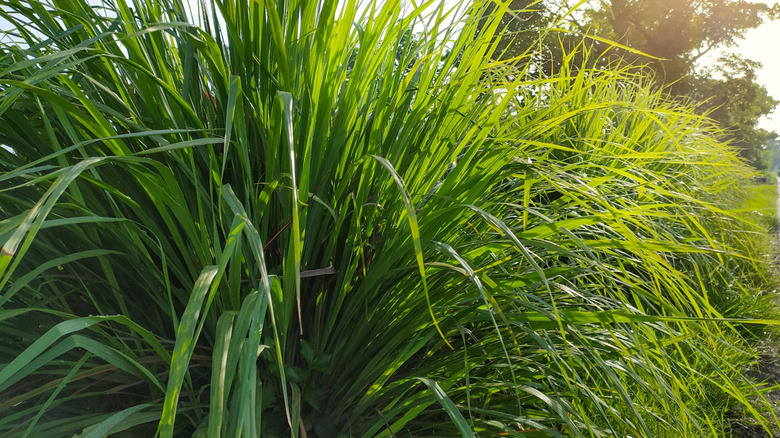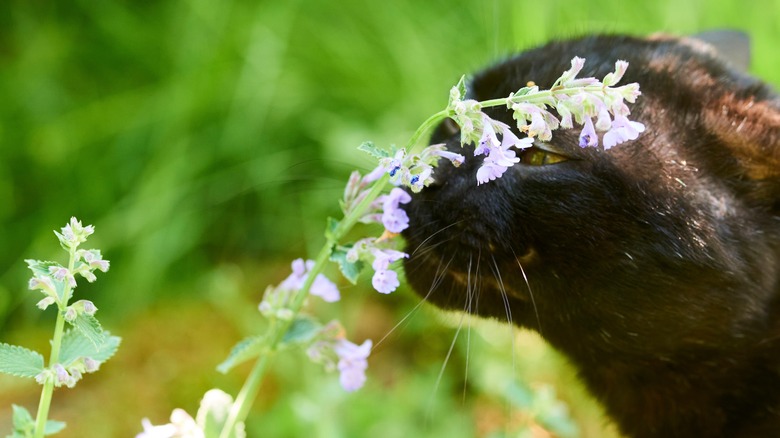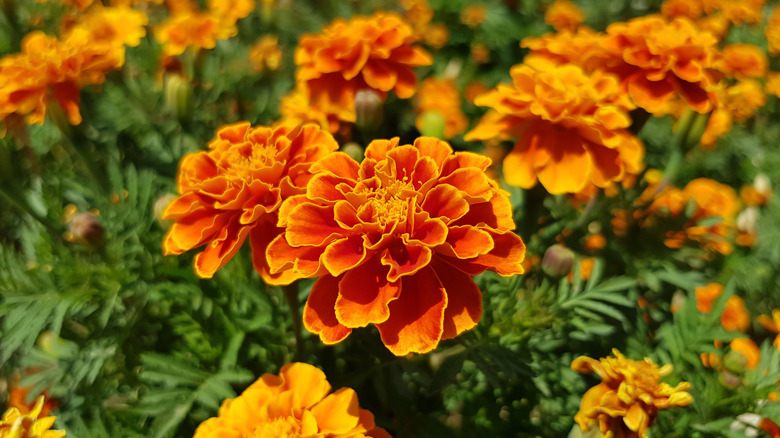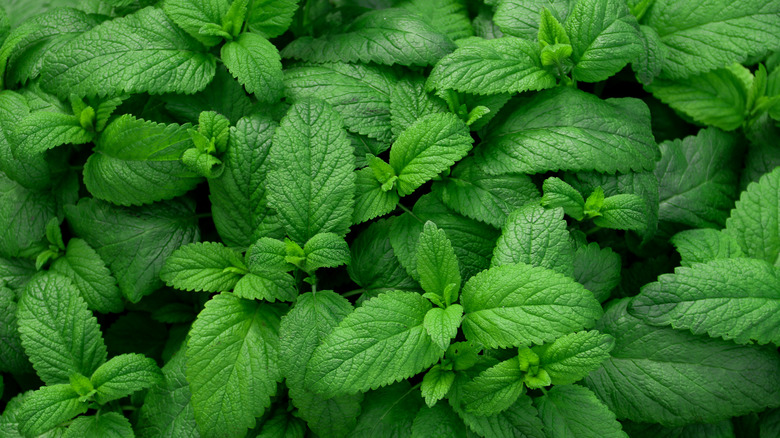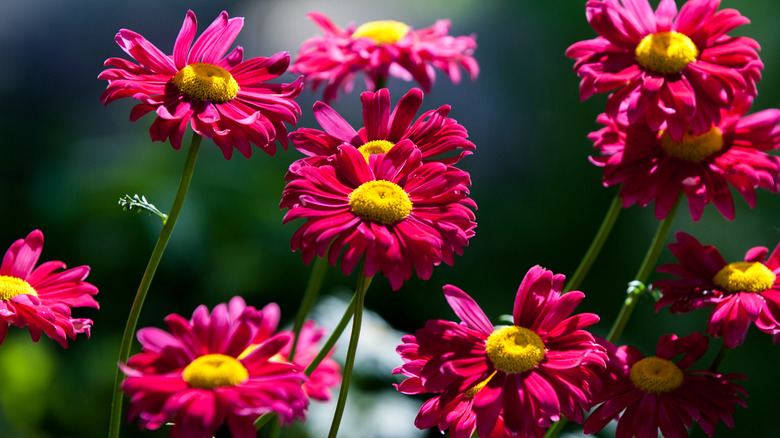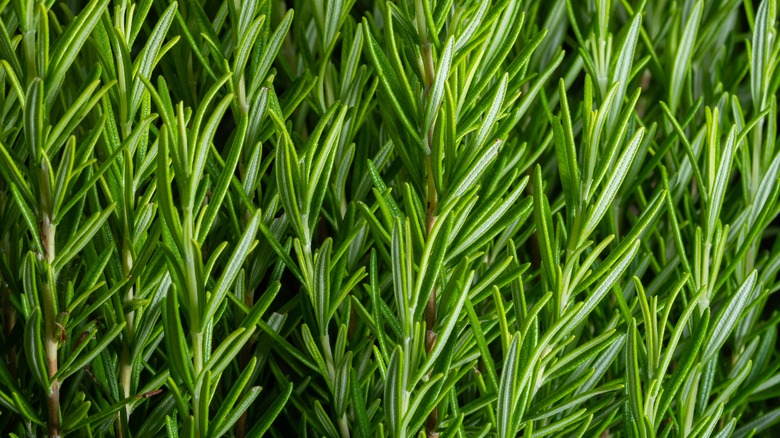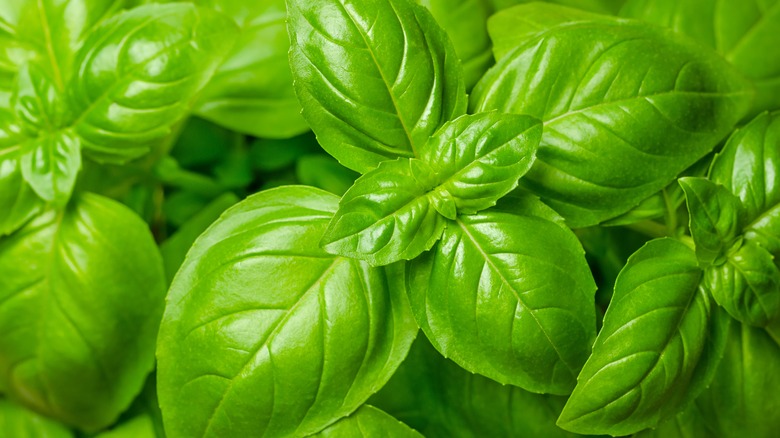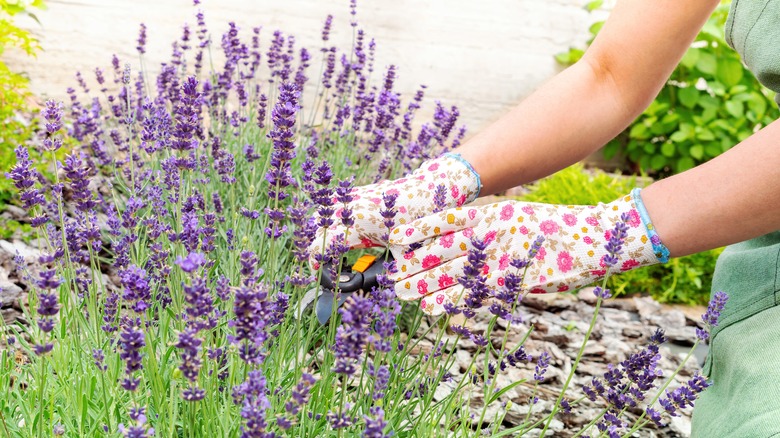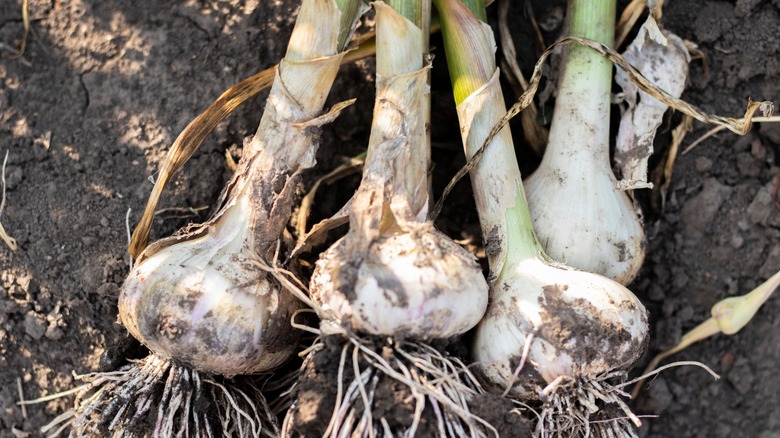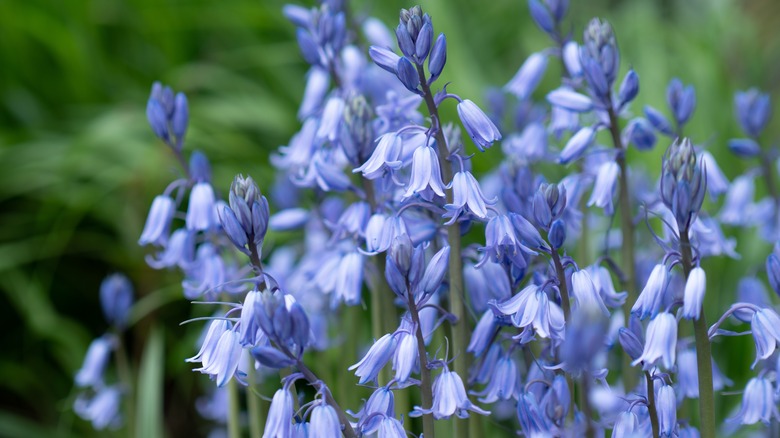The Plants You'll Want To Add To Your Garden If You Have A Mouse Problem
We may receive a commission on purchases made from links.
It doesn't take long to become familiar with the pests a newly built garden can attract. Depending on where you're living and what you're growing, you may have fought off various unwelcome visitors already, including slugs, mites, and a variety of beetles. However, pests don't stop with these annoying and destructive insects. Deer, rabbits, and rodents like mice are also common threats to a garden as they look for tender leaves, stems, grains, and/or seeds to eat. Specifically, if you're dealing with a mouse problem, one way to discourage them from returning is to grow plants known to repel them.
In general, it's not common practice for rodents like mice to enter a yard in search of food. They prefer to get full on what they can find in the wild. However, in urban areas where there aren't many options available to them, they might find your garden a reliable food source. In order to save the vegetables, fruits, and other plants you've painstakingly raised in your garden, you can grow a few specific herbs and flowers that will turn mice in the other direction.
While this won't solve a full-blown mouse infestation, it can be a natural and humane way to deter mice from frequenting your garden plants. In this collection, we take a look at 11 of the best plants to grow when you're dealing with a mouse problem.
1. Lemongrass
Lemongrass (Cymbopogon citratus) is an ornamental grass species that's used for a variety of purposes. In many places that can support its need for warm temperatures and consistent direct sunlight, the plant is used to make herbal teas, repel mosquitos, and decorate gardens. When lemongrass is planted in an area with a mouse problem, it can be successful in deterring them with its sharp scent.
Bloom Season: Rarely flowers
USDA Growing Zone: 10 to 11
Growing Conditions: Full sun
Soil Type: Organically rich and well-draining
Size: 2 to 4 feet tall and 2 to 3 feet wide
2. Catnip
Catnip plants (Nepeta cataria) can scare off mice in two ways. The first is with its smell. Catnip, which is a member of the mint family, has a very distinct odor that mice and other rodents don't appreciate. Another way is through the herb's ability to attract cats. Bringing outdoor cats to your yard is among the best ways to deal with a mouse problem as they chase them and discourage other rodents from entering the garden.
Bloom Season: Spring
USDA Growing Zone: 3 to 9
Growing Conditions: Full sun
Soil Type: Well-draining
Size: 3 feet tall and wide
3. Marigolds
The efficacy of marigold flowers (Tagetes patula) in repelling pests is highly debated. While it's clear they keep some threats, like nematodes, under control, the proof isn't there for many others thought to be deterred by the flowers. Despite this, some gardeners swear by their power to keep all kinds of pests away from their crops. At the very least, these people are rewarded with long-lasting orange flowers throughout the growing season.
Bloom Season: Spring to fall
USDA Growing Zone: 2 to 11
Growing Conditions: Full sun to partial shade
Soil Type: Well-draining
Size: 6 to 12 inches tall
4. Mint
Mint plants (Mentha spp.) are unpalatable to rodents like mice and fight them off with just their smell. This is why some natural mice repellent sprays, like Mighty Mint Rodent Repellent, use peppermint oil as their active ingredient. When planting mint in your garden to deter rodents, keep in mind that it has a very aggressive growth habit. To control mint plants, you might confine them to containers or scatter their leaves onto your soil.
Bloom Season: Summer
USDA Growing Zone: 3 to 8
Growing Conditions: Full sun to partial shade
Soil Type: Well-draining
Size: Up to 3 feet tall
5. Daffodils
Daffodils (Narcissus pseudonarcissus) are spring flowers with very simple growing requirements. Most often, you'll see them pop up just after winter ends in landscapes that are just cold enough for them to grow properly. People tend to choose these bulbs for their spring gardens because they're rarely bothered by pests, local wildlife, and other threats. They're a strong and gorgeous addition that blooms reliably with few problems for low-maintenance gardens.
Bloom Season: Spring
USDA Growing Zone: 3 to 8
Growing Conditions: Full sun to partial shade
Soil Type: Well-draining
Size: 6 to 16 inches tall
6. Painted daisies
Pyrethrum flowers (Tanacetum coccineum), which are now more commonly referred to as painted daisies, are beautiful flowering plants that can be planted in summer gardens. Similar to daffodils, these flowers are rarely bothered by critters due to their poisonous qualities. The blooms contain a natural insecticide called pyrethrin, which can instantly kill certain insects and keep mice and other rodents from scavenging in your garden.
Bloom Season: Summer
USDA Growing Zone: 3 to 7
Growing Conditions: Full sun to partial shade
Soil Type: Well-draining
Size: 2 to 3 feet tall and 1 to 2 feet wide
7. Rosemary
Rosemary (Salvia rosmarinus) is a useful herb that smells and tastes just fine to us, yet, like mint, catnip, and lavender, the overwhelming aroma of rosemary's leaves drives out pests before they snack on your more palatable plants. When you grow this herb in your garden, not only will it save your fruit and vegetables, but it can also entice pollinators and predatory insects that increase the overall health of all plants nearby.
Bloom Season: Spring and summer
USDA Growing Zone: 8 to 10
Growing Conditions: Full sun
Soil Type: Well-draining
Size: 8 feet tall and wide
8. Basil
The basil plant (Ocimum basilium) is an easy-to-grow herb that needs only some basic care to survive. Planted in a garden that offers rich and moist soil along with plenty of direct sunlight, basil rewards gardeners with a few things. Of course, its strong scent repels threats such as rodents, asparagus beetles, carrot flies, and mosquitos. Yet, as a companion plant, basil helps common garden vegetables, including carrots, turnips, peppers, and tomatoes,stay healthy.
Bloom Season: Summer to fall
USDA Growing Zone: 2 to 11
Growing Conditions: Full sun
Soil Type: Rich and well-draining
Size: 2 feet tall and wide
9. Lavender
Lavender plants (Lavandula angustifolia), which are known for their purple flowers with a relaxing scent, are part of the mint family and carry many of the same benefits in the garden. Namely, they're low-maintenance, highly attractive to pollinators, and deter many pests including rodents. Grow this flowering bush around your vegetable garden to ward off mice, or sprinkle its scented parts onto your soil for the same effect.
Bloom Season: Summer
USDA Growing Zone: 5 to 8
Growing Conditions: Full sun
Soil Type: Low fertility, alkaline, and well-draining
Size: 3 feet tall and 4 feet wide
10. Garlic
Just like lavender flowers, garlic cloves (Allium sativum) may be chopped up and applied on top of garden soil to repel threats. Mice, rats, and voles dislike the intense smell of the allium species, and they will avoid it if they can. Alternatively, growing garlic near plants that are frequently targeted by these rodents can work just as well.
Bloom Season: Spring
USDA Growing Zone: 7 to 10
Growing Conditions: Full sun
Soil Type: Organic and well-draining
Size: Up to 3 feet tall
11. Spanish bluebells
Spanish bluebells (Hyacinthoides hispanica), which you might know as wood hyacinths, are spring bulbs that produce plants with gorgeous green strap-like leaves and delicate bell-shaped blooms. In a woodland garden with a mouse problem, the flower is spectacularly rodent-resistant as it contains cardiac glycosides that are toxic to humans and animals.
Bloom Season: Spring
USDA Growing Zone: 3 to 8
Growing Conditions: Full sun to partial shade
Soil Type: Sandy and well-draining
Size: 9 to 18 inches tall and wide
